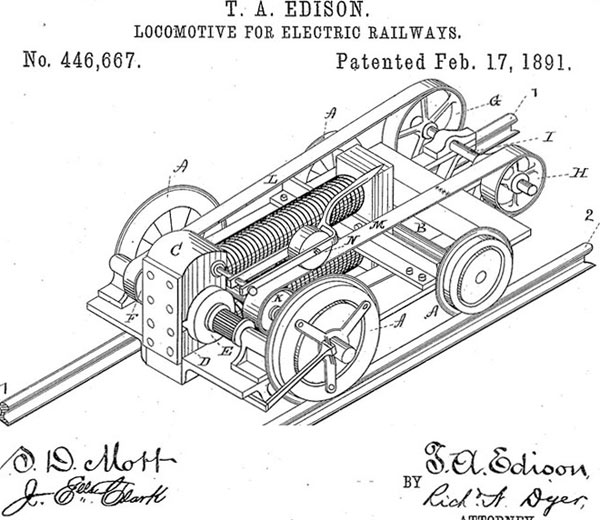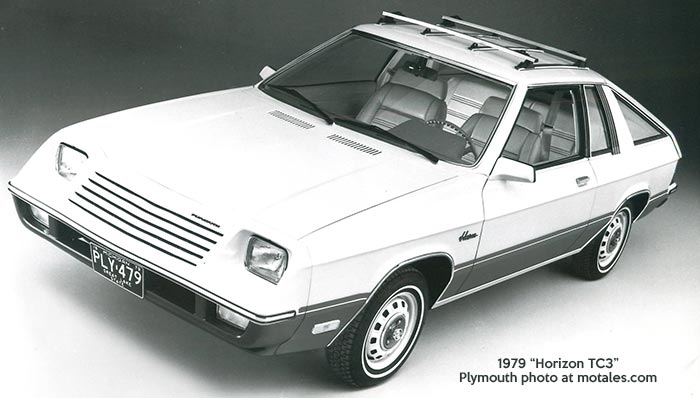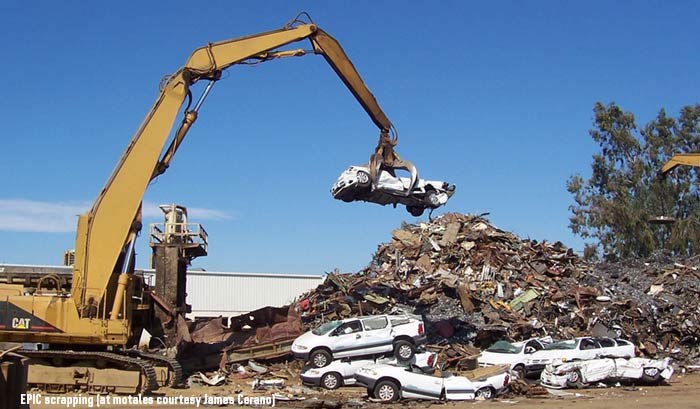Chrysler’s history has some roots in electric cars, though most people have forgotten even their electric minivans from the 1990s. To tell the story, we should begin at the true beginning—which, in practical terms, was Thomas Edison’s work in electric lighting, coming well before the Electric Vehicle Company.

Edison uniquely envisioned electrical systems, not just lights; he started out by visiting an arc-light system. He saw the inefficient, constant-current (voltage fluctuated) generator, and glaring, smelly, noisy arc lamps; when one went out, they all went out. Edison told the owners that they needed more lights of lower intensity, an efficient constant-voltage generator, and parallel circuits. He created all these himself at his Menlo Park labs, along with fuses, meters, insulation, sockets, and such; along with the feeder-and-main circuit designs that remain today. Thomas Edison was the first to make electricity truly work for the public, and the first to create a central power station.
Edison realized, during this, that the generator could be a motor, too—as they are in modern electric cars (regenerative braking). He set up an electric locomotive mainly by laying a generator on its side, for demonstrations. Edison and Frank Sprague kept developing going, creating a company in 1880 to develop “traction engines;” their show at the 1883 World’s Fair inspired many others to start working with motors for vehicles. By then, Edison had moved on to other things, but Sprague kept pushing advances in traction motors.

Chrysler later used another Edison creation: starting in 1901 to 1905, he worked on batteries for electric cars in a “moon-shot” effort. Little was known about most elements; the electron itself had only been discovered in 1897. Edison started with an alkaline solution (existing batteries used acid solutions, which hurt their durability) and quickly settled to nickel and iron electrodes. Lithium powder around one post turned out to have a beneficial impact but nobody knew why, at least for a decade or two. The battery, finalized in 1905 and used for at least a century, had one problem: its voltage was too low for cars. Instead, the nickel-iron battery ended up in roadside lighting, early torpedos, railroads, and mining lights... and finally a Chrysler electric car.
Chrysler was a continuation of Maxwell Motors, which started life as Maxwell-Briscoe—Maxwell made the 1924 Chrysler, and was swallowed whole by the Chrysler holding company in 1925. But Maxwell’s history included those of a handful of other car companies, mostly purchased in the 19-teens.
Pioneers Henry Morris and Pedro Salom built electric taxis (Electrobats) which they leased; from 1894, they grew a slow but influential business. Meanwhile, Andrew Riker was mainly motorizing bicycles; he then built a four-wheel car (really, two attached bicycles) and won the first automobile race in America with it in 1896. A year later, with that publicity under his belt, he was selling a full line of electric cars.

Also in 1897. Isaac Rice created the Electric Vehicle Company, a holding company meant to monopolize cabs. He bought up Electrobat, then sold the company. The new investors merged it with the Columbia Automobile Company in 1900, Columbia’s peak of fame. In that year, the Columbia Runabout was the best selling American car, the first car in America to break a thousand sales in one year. It had one motor and 20 lead-acid batteries, giving it a range of around 40 miles. Then, in 1901, Ransom Olds mass produced cars on a production line (years ahead of Ford), ending Columbia’s time at the top and Electric Vehicle’s hold on taxi markets. Despite clear signs gasoline was the future and its lack of mass production, Columbia acquired Riker Electric in 1902.
Columbia was still known for quality when it failed in the financial panic of 1907. Their team-based production was simply too small in the new assembly-line world. In desparation, they turned to Benjamin Briscoe of Maxwell-Briscoe—the future Chrysler. Unwisely, Briscoe, having just lost a deal to merge every automaker in the country together, decided to take them up on their offer.

Briscoe created a new holding company, U.S. Motor Car, which bought Columbia Motor Car and Maxwell Motors in a 1909 deal (Columbia had owned the Selden patent, but it stayed with Columbia’s former stockholders). The deal added millions of extra stock in the new company, which Briscoe swapped for Alden-Sampson, Dayton Motor Car (Stoddard-Dayton and Courier cars), Gray Motor, Brush (controlled by Briscoe’s brother), and the Providence Engineering Works—all in less than 30 days, according to Anthony J. Yanik in his excellent book (see the references).
Columbia electric cars ended production in 1909 or 1910 as part of the transition into Maxwell. This phase of electric cars was over for the company that would make Chrysler cars in 1924. But what of U.S. Motor? Briscoe was quickly surprised that he had assumed Dayton Motor Car’s $6 million in obligations to suppliers and inability to make new models—one reason the entire company failed not long afterwards. Only the Maxwell name survived, and that was rescued by Walter Flanders, who took over the bankrupt U.S. Motor and put it to work making cars of his own design. In 1925, Walter Chrysler pulled something of a Briscoe, making a holding company and using it to buy Maxwell and Chalmers; but he stopped there, rather than collecting a half-dozen staggering relic companies, and Chrysler thrived until the 1950s, stumbled, recovered, and finally ended up roughly one step from bankruptcy in 1979.
In 1979, Chrysler paired with an electric car converter to make the ETV concept using a GE motor and regenerative braking, with a roughly 100 mile range. The one concept car was, oddly, sold on eBay in 2014, complete with a new Siemens motor.

In the following year, Chrysler worked with Jet to convert ten Plymouth Turismo TC3 L-cars into the Electrica 007, with a 70-mile range and ten-hour recharge time. It had a manual transmission and gasoline heater, and was only sold in Israel.

Despite the regenerative braking of the ETV, these really did not go anywhere. Nor did an English truck, made by the Commer people in England (whom Chrysler has purchased some years earlier). The Dodge 50 chassis cab and Commer Spacevan were closely related and made by putting Dodge B-van bodies onto basic Commer chassis. The result was a solid, reliable, convenient vehicle used for many years. The electric version was the 1981 Dodge 50 Electric, whose 40 mph top speed was fine for final-mile delivery from railways to high streets. A joint venture with Chloride, it actually had more power than the truck with the base engine; just 70 were made, and all were sold, not leased.

That brings us to the electric minivans, which came later and likely did not share any developers in common with either the 1979 ETV or the Dodge 50. We have a full article on Chrysler electric minivans, but these are the bare bones facts:


After this final debacle, Chrysler did go back to developing electric cars in Auburn Hills; but nothing actually came out, unless one counts concepts and plugin hybrids, until the 2024 ProMaster BEV, 2025 Ram 1500 REV, Jeep Recon, Jeep Wagoneer S, and 2025 Dodge Charger Daytona ... ironically on 400V or 800V platforms.
Key sources
Copyright © 2021-2025 Zatz LLC • Chrysler / Mopar car stories and history.
YouTube • Editorial Guidelines • Videos